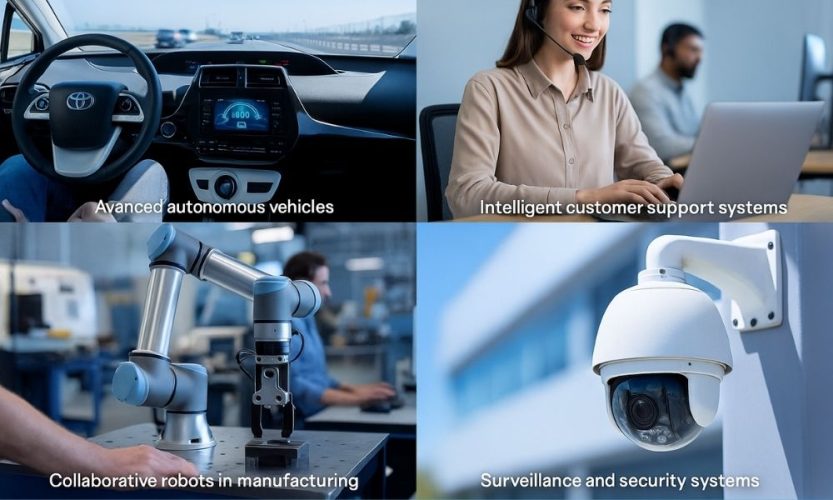Level 3 AI agents are spearheading a new era in automation, enabling machines to execute complex tasks with conditional human oversight, thereby boosting efficiency. These intelligent systems, capable of making independent decisions within defined scenarios, represent a pivotal step forward, making the study of level 3 AI agents increasingly vital.
Contents
Defining level 3 AI agents in detail
AI agents with conditional automation, often referred to in the context of level 3 capabilities, are artificial intelligence systems designed to monitor their environment and make decisions to act autonomously under predefined conditions and scenarios. The hallmark of these systems is their capacity to operate without continuous human input for the majority of their assigned tasks. However, when faced with situations outside their programmed operational scope, unexpected incidents, or complex scenarios demanding more nuanced judgment, such agents will require intervention or decisions from a human operator.
The “conditional” aspect within their automation is the key differentiator. They are not fully autonomous like higher-level agents but far surpass the capabilities of agents that merely react to simple rules. Systems with conditional autonomy embody a sophisticated balance between machine automation and human control. The development of robust AI at this level is a testament to progress in AI research.

Key characteristics of level 3 AI agents versus other levels
To truly appreciate the value of conditional automation systems, it’s essential to compare them with other AI agent levels:
- Compared to simpler reflex agents (level 1) or model-based reflex agents (level 2), which operate on basic rules or limited world models, level 3 AI agents possess a more advanced ability to understand context and make complex decisions within their designated operational design domain.
- The primary distinction between these AI entities and high automation systems (level 4) lies in the human’s role. While level 4 AI can handle most situations, including malfunctions, with humans acting as remote supervisors, conditional systems require humans to be ready to retake control when the system signals or encounters an unmanageable situation. This handover mechanism is a critical feature.
- Full automation (level 5) represents the ultimate goal, where AI can operate entirely autonomously. AI at the third level serves as a vital stepping stone towards achieving this full autonomy.
Thus, these systems occupy a special niche, offering substantial automation while ensuring humans remain integral for crucial decision-making in specific contexts. The performance of AI at this stage heavily relies on the quality of their training data and algorithms.
Practical applications focusing on level 3 AI agents
The conditional autonomy of this technology has paved the way for numerous practical applications, driving efficiency and innovation:
Advanced autonomous vehicles: This is perhaps the most widely discussed application where “level 3” is prominent. Vehicles equipped with AI capable of this operational level can perform self-driving tasks on highways or in traffic jam situations, allowing the driver to temporarily disengage from driving. However, the system will prompt the driver to regain control when conditions are no longer suitable. The effectiveness of these autonomous driving systems is critical for safety.
Intelligent customer support systems: Chatbots and virtual assistants built upon conditional AI principles can independently handle a majority of customer inquiries. When faced with complex requests, these intelligent assistants will escalate the conversation to a human support agent.
Collaborative robots (cobots) in manufacturing: Industrial robots integrated with systems offering conditional autonomy can work alongside human employees. They autonomously perform repetitive tasks but will pause and alert a technician if they detect product defects. This interaction showcases the conditional nature of such AI.
Surveillance and security systems: Some advanced AI can analyze video feeds from security cameras, automatically detecting suspicious behavior. Upon detection, the system, a form of this advanced AI, alerts human security personnel for timely action.
In each of these applications, AI entities capable of conditional automation function as powerful tools, automating significant portions of work while keeping a human “in the loop” for critical decisions.

Specific benefits and challenges of level 3 AI agents
The deployment of conditional automation AI offers considerable benefits:
- Enhanced productivity: These systems free humans from routine tasks, allowing them to focus on work requiring higher-level creativity.
- Improved consistency: Such AI performs tasks uniformly, reducing errors attributable to human factors.
- Continuous operation: Within their defined scope, these agents can operate 24/7.
However, developing and operating AI at this tier also presents unique challenges:
- The “handover problem”: Ensuring a safe and effective transition of control from the AI to a human is a major technical hurdle for systems aiming for level 3 autonomy.
- System reliability: These AI systems must be exceptionally reliable within their specified operational domain.
- Accountability: Determining responsibility when a conditionally autonomous agent makes an error can be complex.
The future and development potential of level 3 AI agents
Level 3 AI agents are not the final destination but a crucial developmental stage. Research and development efforts continue to focus on enhancing the perception, decision-making, and reliability of these intelligent systems. The goal is to expand their autonomous operational capabilities and reduce the frequency of required human intervention, steadily progressing towards higher levels of autonomy.
The successful refinement of AI at this conditional stage will lay a solid foundation for more autonomous AI generations. The ongoing evolution of such AI promises even more sophisticated applications.
In essence, level 3 AI agents are a pivotal technology, offering powerful conditional automation and unlocking groundbreaking opportunities across diverse sectors. To explore more detailed insights and the latest updates on level 3 AI agents and artificial intelligence, be sure to follow Meme Snipe Bot!
